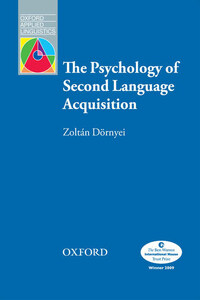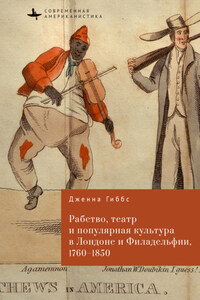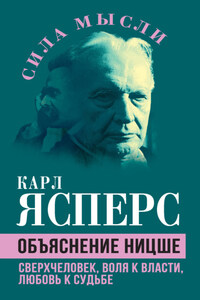Published in this series:
BACHMAN: Fundamental Considerations in Language Testing
BACHMAN and PALMER: Language Testing in Practice
BRUMFIT: Individual Freedom and Language Teaching
BRUMFIT and CARTER (eds.): Literature and Language Teaching
CANAGARAJAH: Resisting Linguistic Imperialism in Language Teaching
COHEN and MACARO (eds.): Language Learner Strategies
COOK: Discourse and Literature
COOK: Language Play, Language Learning
COOK and SEIDLHOFER (eds.): Principle and Practice in Applied Linguistics
DöRNYEI: Research Methods in Applied Linguistics
ELLIS: SLA Research and Language Teaching
ELLIS: Task-based Language Learning and Teaching
ELLIS: The Study of Second Language Acquisition (2nd edn.)
ELLIS: Understanding Second Language Acquisition
ELLIS and BARKHUIZEN: Analysing Learner Language
FOTOS and NASSAJI (eds.): Form-focused Instruction and Teacher Education
HOLLIDAY: The Struggle to Teach English as an International Language
HOWATT: A History of English Language Teaching
JENKINS: English as a Lingua Franca
JENKINS: The Phonology of English as an International Language
KERN: Literacy and Language Teaching
KRAMSCH: Context and Culture in Language Teaching
LANTOLF (ed.): Sociocultural Theory and Second Language Learning
LANTOLF and THORNE: Sociocultural Theory and the Genesis of Second Language Development
LARSEN-FREEMAN and CAMERON: Complex Systems and Applied Linguistics
MACKEY (ed.): Conversational Interaction in SLA
MEINHOF: Language Learning in the Age of Satellite Television
NATTINGER and DECARRICO: Lexical Phrases and Language Teaching
PHILLIPSON: Linguistic Imperialism
SEIDLHOFER (ed.): Controversies in Applied Linguistics
SELIGER and SHOHAMY: Second Language Research Methods
SKEHAN: A Cognitive Approach to Language Learning
STERN: Fundamental Concepts of Language Teaching
STERN (eds. P. ALLEN and B. HARLEY): Issues and Options in Language Teaching
TARONE and YULE: Focus on the Language Learner
WIDDOWSON: Aspects of Language Teaching
WIDDOWSON: Defining Issues in English Language Teaching
WIDDOWSON: Practical Stylistics
WIDDOWSON: Teaching Language as Communication
WRAY: Formulaic Language
Great Clarendon Street, Oxford, OX2 6DP
Oxford University Press is a department of the University of Oxford. It furthers the University’s objective of excellence in research, scholarship, and education by publishing worldwide in
Oxford New York
Auckland Cape Town Dar es Salaam Hong Kong Karachi
Kuala Lumpur Madrid Melbourne Mexico City Nairobi
New Delhi Shanghai Taipei Toronto
With offices in
Argentina Austria Brazil Chile Czech Republic France Greece
Guatemala Hungary Italy Japan Poland Portugal Singapore
South Korea Switzerland Thailand Turkey Ukraine Vietnam
Oxford and Oxford English are registered trade mark of
Oxford University Press in the UK and in certain other countries
© Oxford University Press 2009
The moral rights of the author have been asserted
Database right Oxford University Press (maker)
First published 2009
2012 2011 2010
3 5 7 9 10 8 6 4 2
No unauthorized photocopying
All rights reserved. No part of this publication may be reproduced, stored in a retrieval system, or transmitted, in any form or by any means, without the prior permission in writing of Oxford University Press, or as expressly permitted by law, or under terms agreed with the appropriate reprographics rights organization. Enquiries concerning reproduction outside the scope of the above should be sent to the Rights Department, Oxford University Press, at the address above
You must not circulate this book in any other binding or cover and you must impose the same condition on any acquirer
Any websites referred to in this publication are in the public domain and their addresses are provided by Oxford University Press for information only. Oxford University Press disclaims any responsibility for the content
ISBN 978-0-19-442197-3
Printed and bound in China
The history of acceptance of new theories frequently shows the following steps: at first the new idea is treated as pure nonsense, not worth looking at. Then comes a time when a multitude of contradictory objections are raised, such as: the new theory is too fancy, or merely a new terminology; it is not fruitful, or simply wrong. Finally a state is reached when everyone seems to claim that he had always followed this theory. This usually marks the last state before general acceptance.
(Lewin 1943:292)
I normally enjoy the process of writing a book, but this volume on the psychology of second language acquisition (SLA) has been an emotional roller-coaster at times. In fact, after I received the contract from Oxford University Press, I put off working on the manuscript for several years – I did have some good excuses, but the bottom line was that I was apprehensive about the enormity of the task: applied linguistics and second language research had clearly been shaken by a paradigmatic earthquake. This has been caused by (1) the rapidly growing influence of relevant brain research in psycholinguistics, neurolinguistics, neuropsychology, neurobiology, and more generally, in cognitive (neuro)science; and (2) the emergence of new cognitive approaches to the study of language acquisition, such as connectionism, emergentism, dynamic systems theory, complexity theory, and usage/exemplar-based theories. The resulting changes in our field have been so fast and profound that the word ‘blitzkrieg’ seems oddly fitting to describe what we are currently experiencing.








